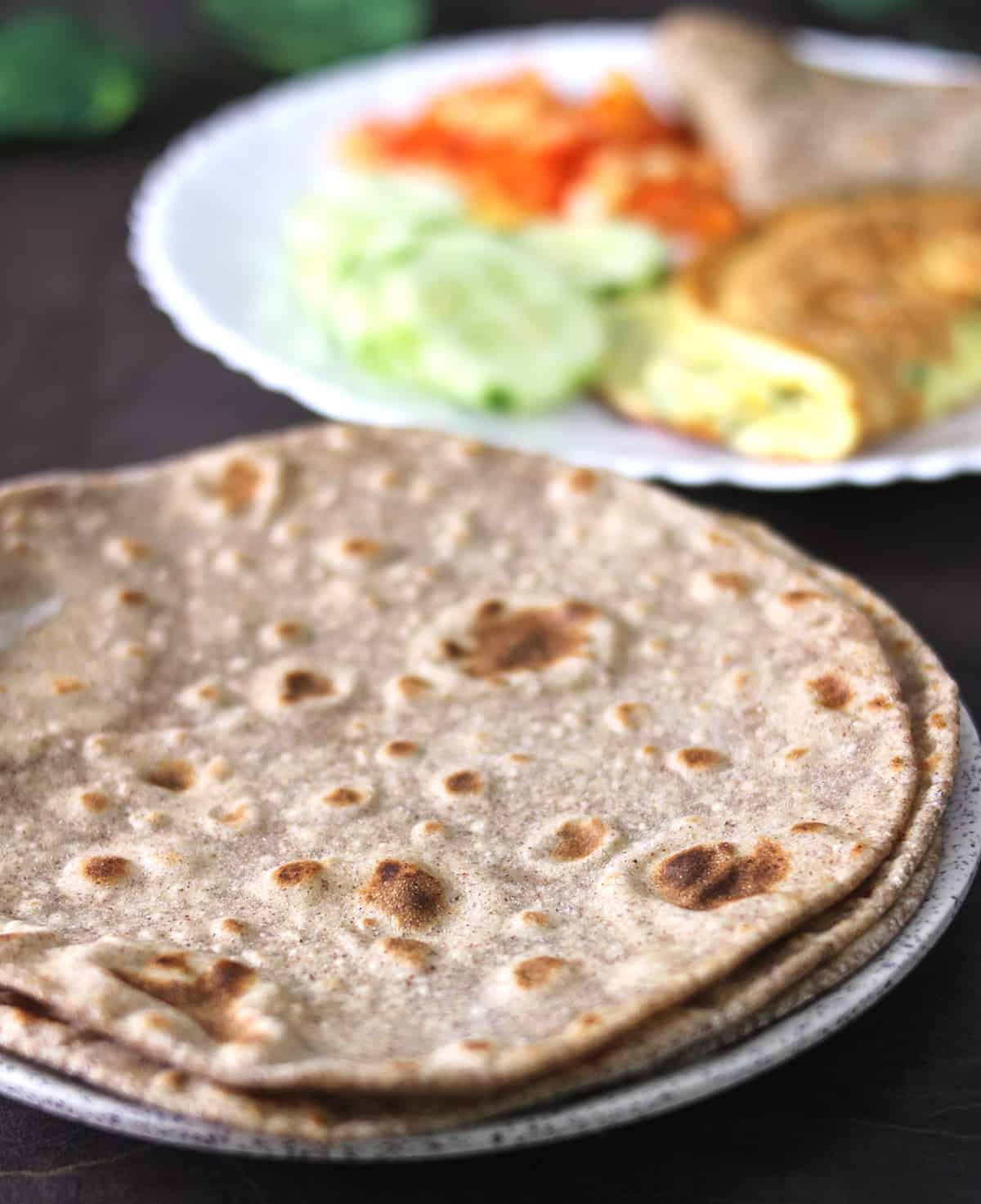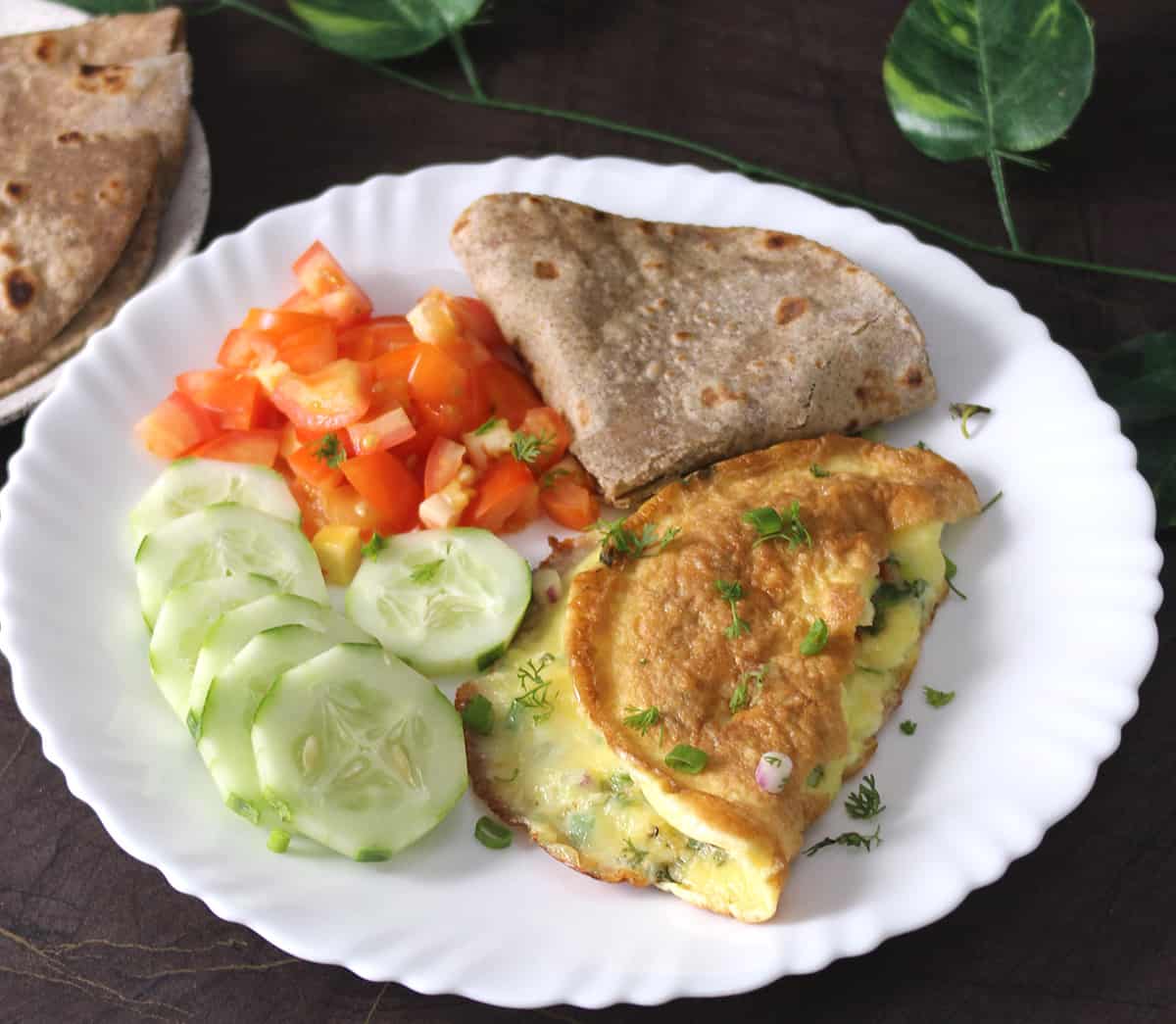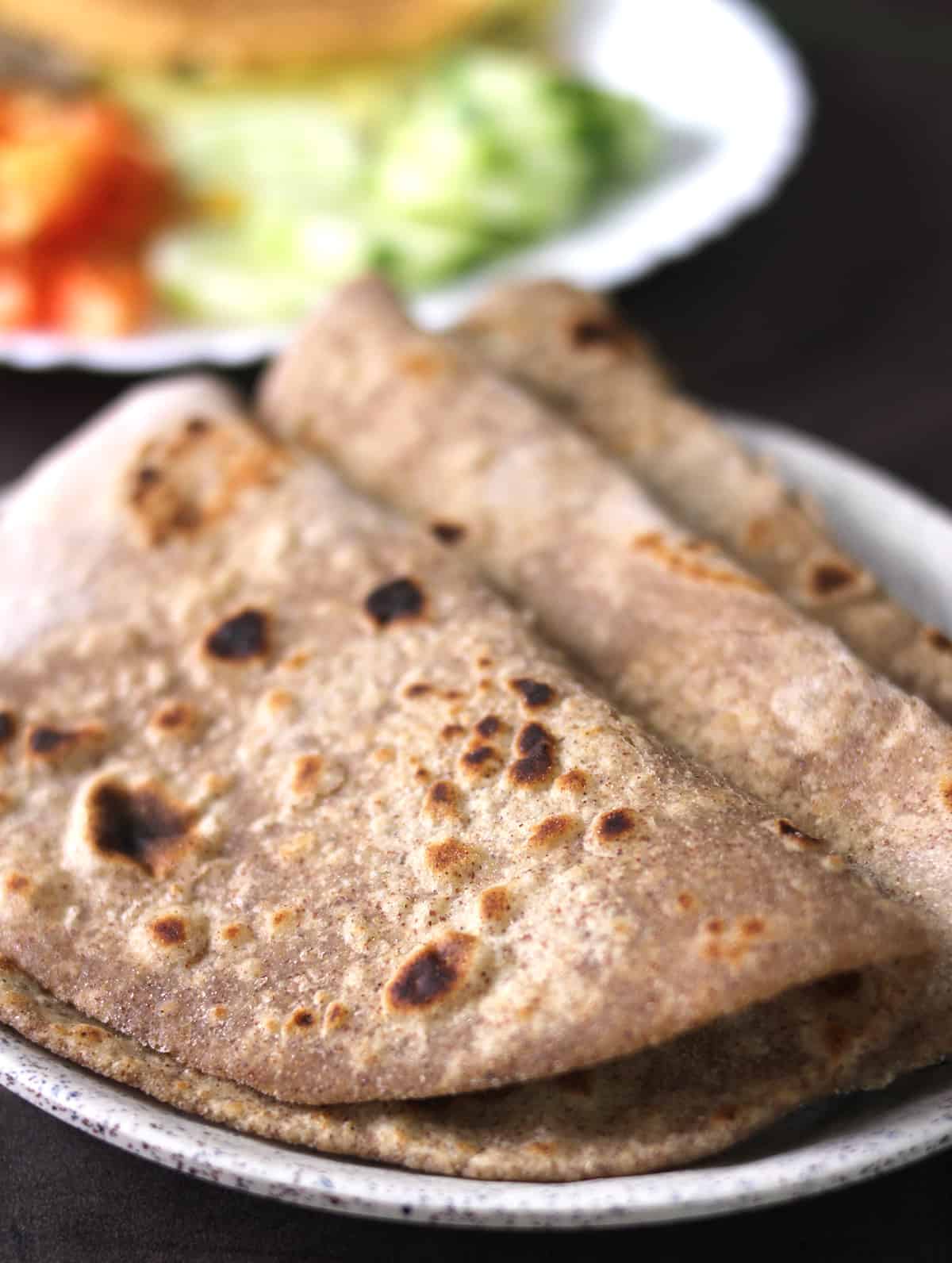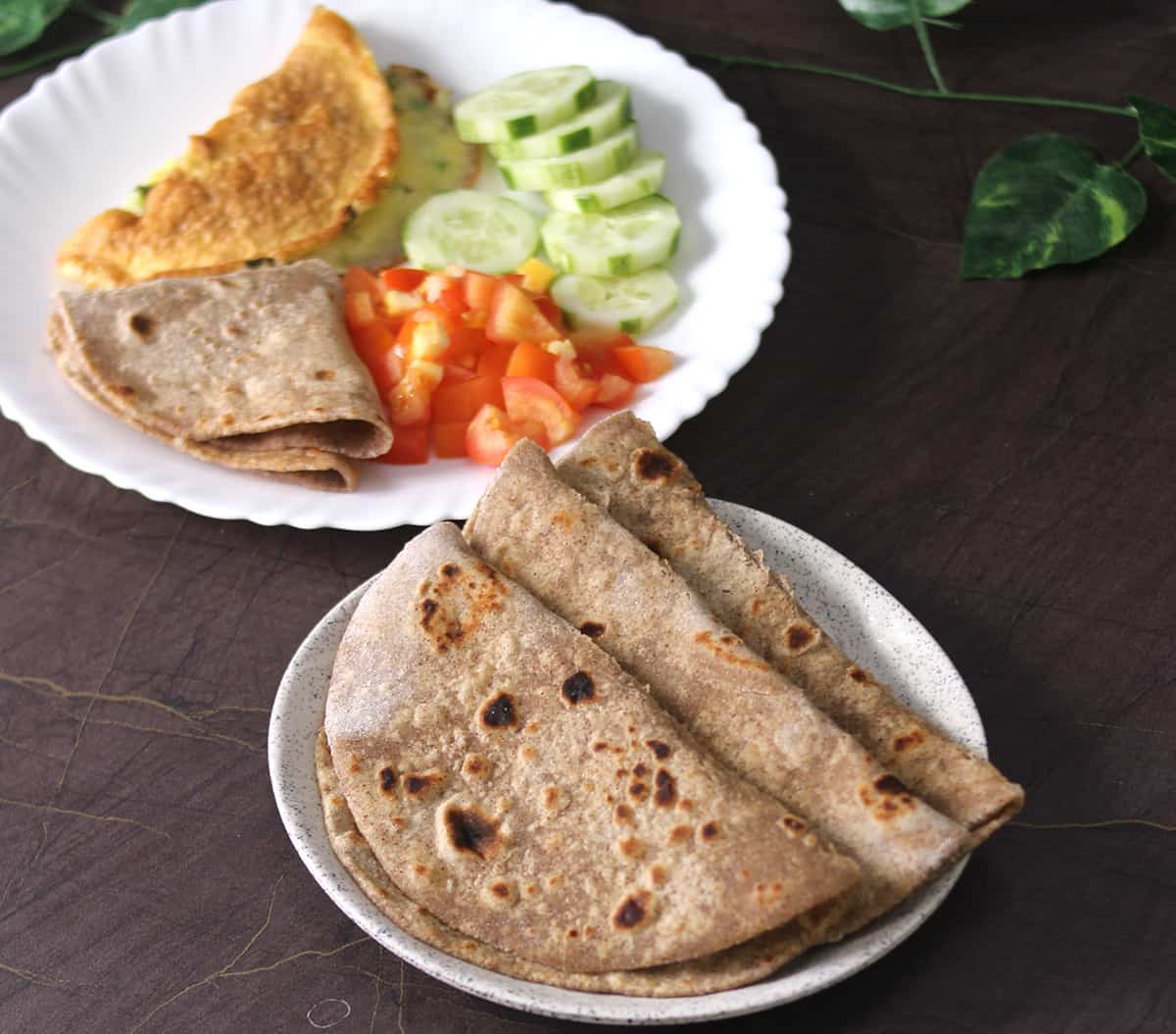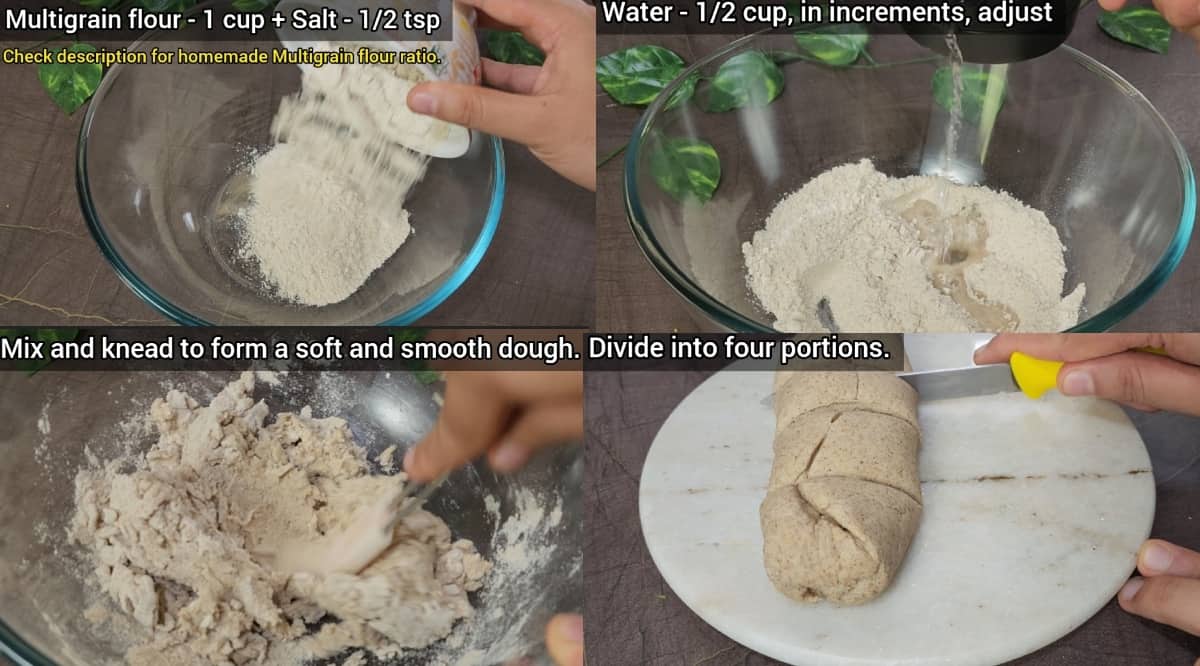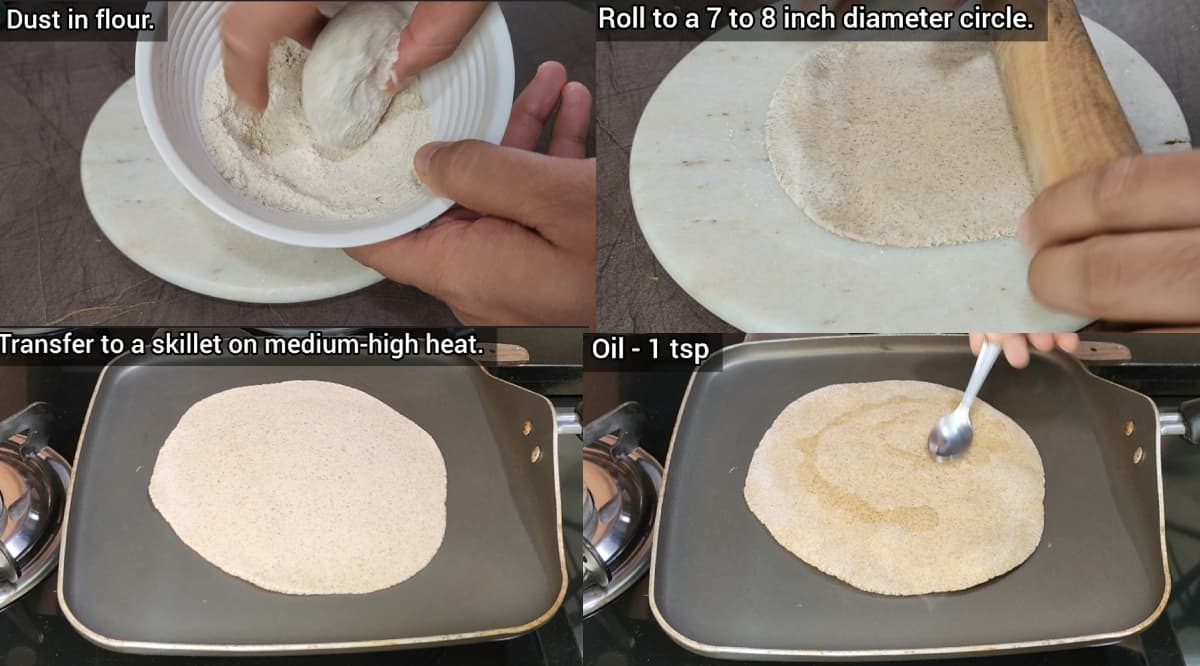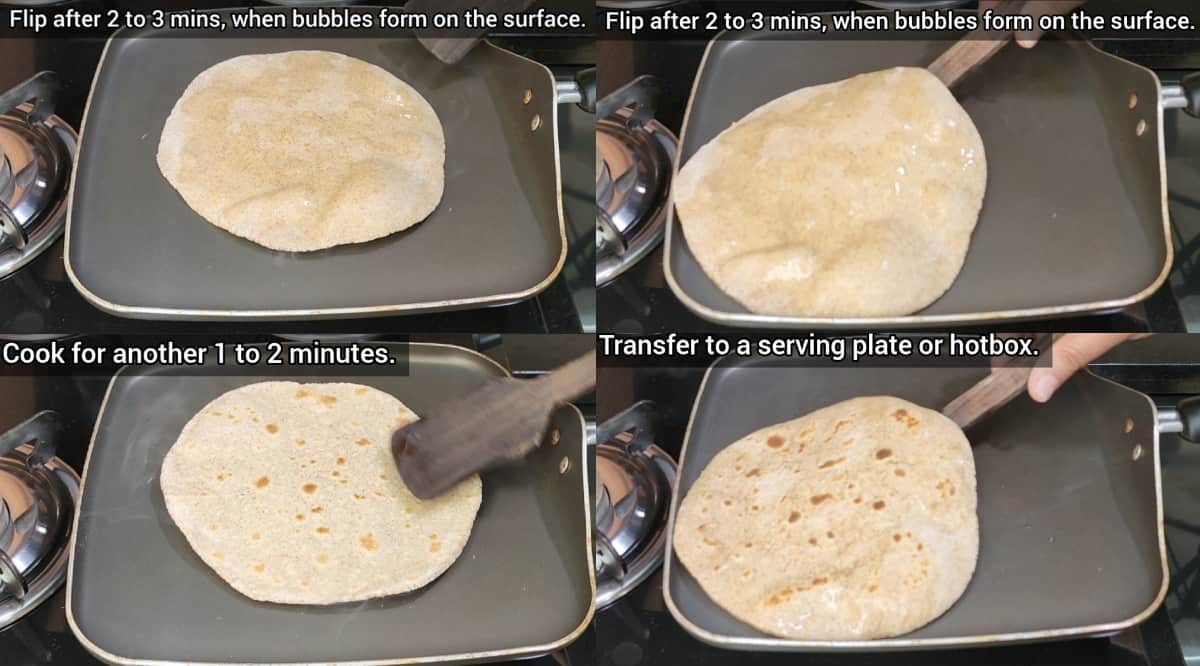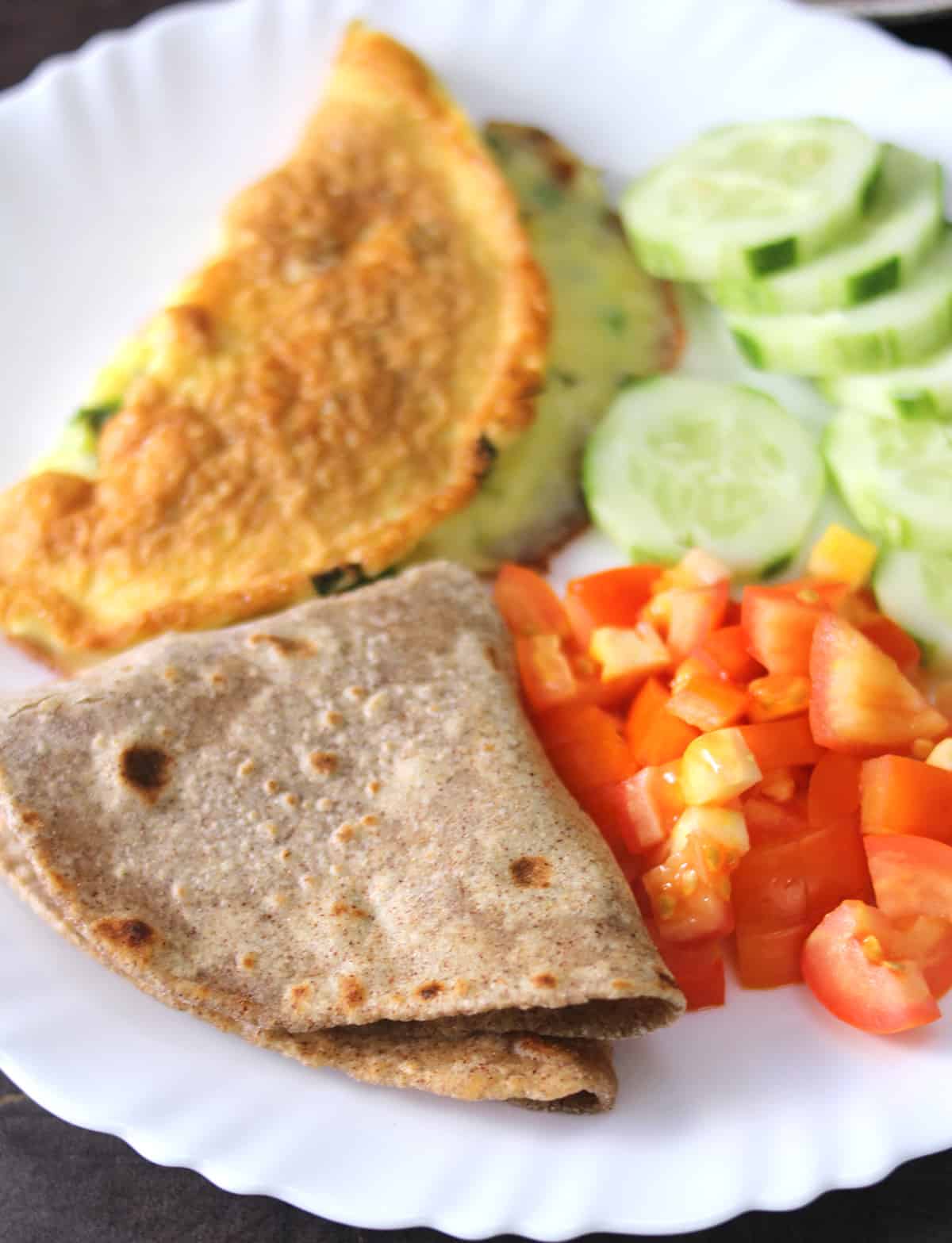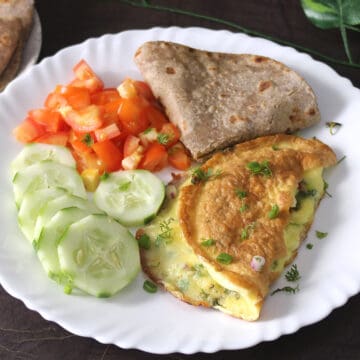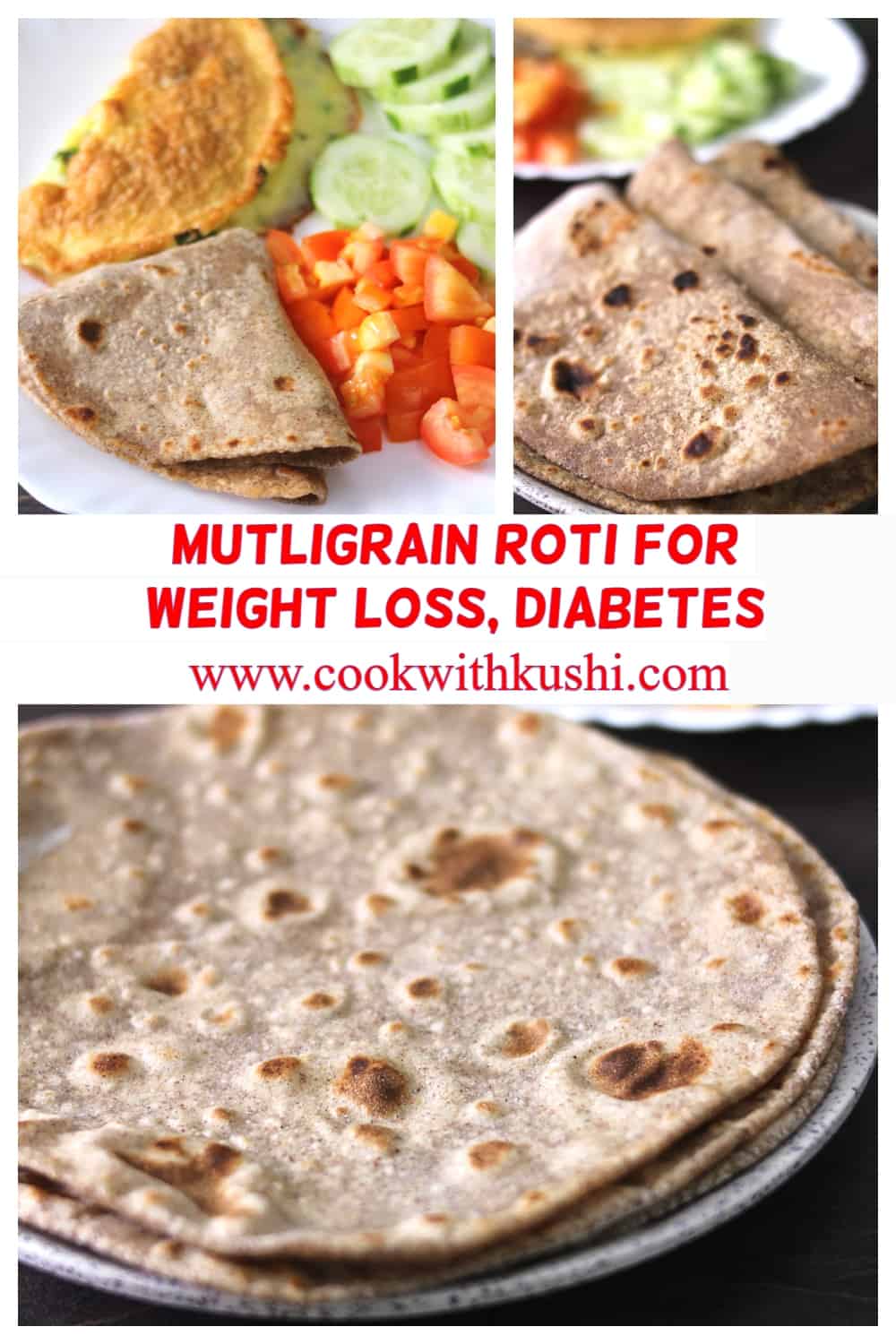You can also check out our easy and healthy 2 ingredient millet or quinoa idli. Multigrain roti is not only useful for weight watchers, but this roti can also be enjoyed even by diabetics patients and kids for lunchbox or as an after-school snack due to its health benefits. You can use multigrain flour to prepare parathas for morning breakfast or make healthy kathi rolls and wraps.
About the recipe
I have already shared healthy oats chapati and mixed flour multigrain chapati before. The recipe below is another healthy variation to it. If you want breakfast, lunch, or dinner packed with all essential nutrients, then this roti (chapati) is perfect for you. Serve it with a simple and nutritious Quinoa salad, a weight loss friendly keto omelette, protein-rich Quinoa khichdi/porridge, curds, or your favorite veggies. I use store-bought multigrain flour if I am short of time. Else I make homemade multigrain atta by mixing different flours available in my pantry.
How to make multigrain atta or multigrain flour at home?
With whole wheat flour as the main ingredient, you can include other types of flour: single millet or a combination of millets (ragi or finger millet, jowar or sorghum or white millet flour, or bajra or pearl millet) along with soybean flour, oats flour, or chickpea flour if desired. If making at home, the ratio of all flour is given below but if using store-bought flour, use whatever is in the packet. Every brand has a different combination of flour. For the homemade multigrain flour - I use the below combination:
3 cups of Wheat flour ⅓ cup of Ragi flour ⅓ cup of Jowar flour ⅓ cup of Bajra flour
You can also add fenugreek powder (1 tsp) and soybean flour (2 to 3 tbsp) if desired (it only adds additional benefits). In a bowl, mix together all the flours mentioned above and mix well. Transfer the flour to an airtight container and use it as and when needed.
Health benefits of multigrain roti
Whole wheat flour is perfect for people with diabetes as it will not increase your blood sugar levels because of its low glycemic index. Human clinical trial results by Nagaraju et al. (2020) showed that using the multigrain roti by diabetic participants helps control glucose and improve insulin sensitivity. Jowar or Sorghum is gluten-free, loaded with protein and calcium, and rich in fiber which promotes growth and also has complex carbs and thus will be absorbed slowly by your bloodstream - which means no spike in insulin levels, therefore suitable for diabetics and weight watchers. Bajra or Pearl Millet is also gluten-free, high in fiber content, controls blood sugar, and is thus very good for diabetics and weight watchers. Ragi flour is high in protein, a wonder grain for weight loss, high in calcium, and is consumed as a cooling food on hot summer days. Ragi flour also helps in reducing the risk of diabetes. For me, ragi is the number one atta or flour for weight loss or diabetes. Mainly I know that all these flours help in weight loss and controlling your diabetes. For a gluten-free diet, you will have to skip adding wheat flour. That is, prepare flour by including equal portions of the 3 millet flours - i.e., ragi, jowar, and bajra. But remember that the flatbread may turn a little hard upon cooking on the skillet.
Ingredients
1 cup Multigrain flour Salt, to taste Water to knead the dough
How to make soft and fluffy multigrain rotis?
In a bowl, add flour and a pinch of salt. Add water in increments and knead to form a soft and smooth dough. Cover the dough and let it rest for 10 minutes. Make lemon-sized balls from the dough. Heat the tawa or the griddle on a medium-high flame. Dust the working surface, and roll the dough balls into 7-inch to 8-inch circles using a rolling pin. Transfer to the griddle and drizzle little oil or ghee if needed. Once the brown spots start appearing at the bottom, flip and cook on another side. The total cooking time per roti is about 2 to 3 minutes.
Pro Tips
To make soft fluffy chapati (roti) you have to knead the dough with enough water to be soft and smooth yet not sticky. Also, ensure the pan is hot before adding your rotis. Else cooking the rotis on low flame for a longer time will turn them hard. You can smear ghee at the end if desired. I make the rotis only on tawa. To make multigrain phulkas (rotis that puff up like pooris and are cooked directly over flame), simply cook one side on the tawa and cook the other side directly over the flame with the help of tongs.
Variation:
I have also made methi multigrain roti by adding a handful of finely chopped fenugreek leaves to the dough. It tastes good and can be served with pickle, curds, or any gravy of your choice.
How to store leftover rotis?
Rotis taste the best when they are prepared and served fresh. Making the dough hardly takes 5 minutes. So make only as much as needed. If you have any leftover rotis, store them in an airtight container in the refrigerator for 1 or 2 days or in the freezer for up to a week. To reheat, use a microwave. Sprinkle a few drops of water and microwave for 10 to 15 seconds.
Some more healthy weight loss and diabetes-friendly recipes
Oats Chapati Mixed flour Chapati Weight loss Quinoa Salad Dahi Bhindi
Video
Check out the video recipe on making of best multigrain roti at home.
Recipe card
For more recent updates, follow me on Pinterest, Instagram, and Twitter. Click below to save it on Pinterest
References
Nagaraju, R., Sobhana, P.P., Thappatla, D., Epparapalli, S., Kandlakunta, B. and Korrapati, D., 2020. Glycemic index and sensory evaluation of whole grain based multigrain Indian breads (rotis). Preventive Nutrition and Food Science, 25(2), p.194.
